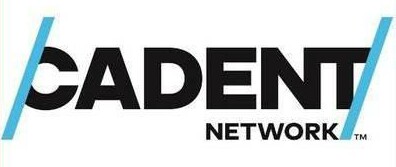I believe there is always room for an energetic
discussion in the media business, even when it is billed as a “debate”
and both sides essentially agree on the matter at hand. There was just
such a “debate” presented this week by Cadent as part of its Upfront
event. It consisted of two panels designed to answer the question: What
can we expect from this Upfront and future Upfronts when data moves to
center stage and content needs to further adapt to multiple platforms?
"We are exploring the pros and cons of audience versus content
today,” said Jim Tricarico, CRO of Cadent. “There have been many changes
in the media ecosystem in the past two years and today is a coming out
party for Cadent. We have rebranded for a new heritage and a new vision,
repositioned and totally reinvented the service backend with
technology, data, analytics and automation." This
is certainly a media market in flux. But many look at it as an
opportunity. “The marketplace has never been more exciting and
challenging,” Tricarico explained. “The market is changing fast with
programmatic, addressable and advanced TV. While the TV landscape
changes and evolves, prices continue to go up and ratings are down.
There is fragmentation in viewership and shrinkage in ratings.”
This
is certainly a media market in flux. But many look at it as an
opportunity. “The marketplace has never been more exciting and
challenging,” Tricarico explained. “The market is changing fast with
programmatic, addressable and advanced TV. While the TV landscape
changes and evolves, prices continue to go up and ratings are down.
There is fragmentation in viewership and shrinkage in ratings.”With lower ratings and reduced ad loads, networks can be selective on what types of business they decide to take. Right now it looks like they may make room for higher priced scatter. Cadent’s promise is that they deliver across a full national footprint comprised of more than 200 partners, 210 DMAs and 80 million homes. The company is focusing time and resources on technology development, automation and data analytics and has just built an inventory management system for more effective media planning.
Nick Troiano, Cadent’s new CEO, revealed the company’s future plans. “I came to Cadent through their acquisition of BlackArrow, which we then rebranded for Cadent,” he said. “We are able to do dynamic ad insertions through VOD, OTT and DVR and even deliver targeted ads in live TV. TV is changing. The living room is changing. We are uniquely qualified to transition advertising into this new TV world.”
Agency Perspective
In moderating the debate between content and audience, Jack Myers, Media Ecologist and Chairman of MyersBizNet, asked the first panel of agency executives where they thought the market was going. Erica Schmidt, Executive Vice President and Managing Director North America, Cadreon, responded with a data-centric perspective. “From the data viewpoint, we are in an interesting time in the industry and are thinking differently about TV buying,” she said. “There are the issues of pricing and harder to find audiences. This gives us an opportunity to think differently and we are basing our decisions on audience and data. There are huge pressures on CPMs but we continue to push the envelope.”
“So are we moving away from the golden age of programming?” Myers asked. Rino Scanzoni, Chief Investment Officer, GroupM, responded in the affirmative. “We have used content as a surrogate to identify audiences for years,” he explained. “The TV business is going away from looking at content to find audiences to using data to do so. We are moving to an audience-based transactional system.”
Catherine Warburton, Chief Investment Officer, Assembly added, “We have always been buying content and audience, so the idea of content versus audience is not new. You have to balance super premium content for a client. We are looking beyond TV for audiences. We look across all screens. There are places other than actual TV to get these audiences.”
Client Perspective
Turning to clients in the second panel, Myers asked Tim Sullivan, former Vice President, Media at The Wendy's Company and Andy Jung, Director of Marketing and Communications at The Scotts Miracle-Gro Company whether they, like the agencies, had business silos. “You are dealing with silos even on the client side,” Sullivan responded. “We are currently in an evolution as to how to move money to different forms of advertising. TV is trying to learn about new solutions and we clients need to be willing to change.”
“Silos are a huge reality of the business,” Jung added. “I need to sell a certain amount of grass seeds within this year and we rely heavily on big box stores. But we also see changes with new home ownership and the new entry points. We are looking at technology. Weather is a big data factor for us and we need to reach audiences in an abbreviated time period.”
“Is the business becoming more adversarial with the use of data intelligence?” Myers asked. “Definitely,” Sullivan replied. “Everyone is leveraging different types of data. It will be interesting to see if we can work together or if there will be turf battles. We want solutions so that everyone understands that we are trying to build our business in the most effective way with the highest results.”
Conclusion
The debate of content versus audiences may not be settled during this Upfront but if we as an industry can all work together to find the right balance of creative and quantification, we will be able to move the entire media ecosystem a big step forward. As Myers summed it up, “It is a changing game and we need to remain flexible.”
No comments:
Post a Comment